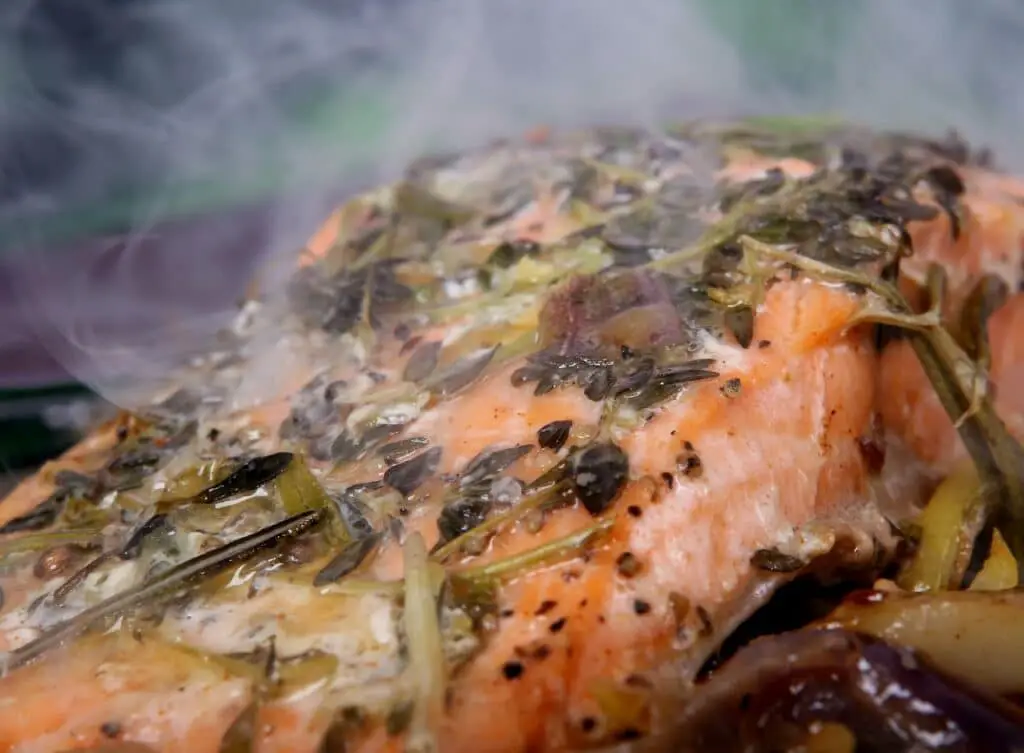Dogs are carnivores, and a mere sight of fish meat would make their mouths watery.
As a dog parent, it’s challenging to hold onto a piece of haddock while your furry friend is looking at you with those puppy eyes.
Your love for the dog will push you to share the fish with him.
So, can dogs eat haddock?
Yes, haddock fish is a good source of lean protein and omega-three fatty acids.
In addition, haddock is a low-calorie food, making it a good choice for dogs trying to lose weight.
Before giving your canine haddock, understand its health benefits, risks, and safe feeding practices.
These considerations are crucial as they ensure your dog is safe as he enjoys a piece of haddock.
Keep reading to get enlightened on why and how to give your dog a haddock.

Reasons to Give Your Dog Haddock
Haddock is an excellent treat that can be part of a regular dog diet because it contains:
- Niacin
- Vitamins B6 and B12
- Pantothenic acid
- Selenium
- Phosphorus
- Omega-3 fatty acids
- Potassium
These nutrients are beneficial to your dog’s health in the following ways:
Maintaining a Healthy Skin and Coat
Niacin, vitamins B12 and B6, selenium, and omega-3 fatty acids found in haddock help keep your dog’s skin healthy.
A healthy coat is a result of well-nourished skin.
These nutrients also promote the growth of new cells, which is essential for wound healing.
If your dog has cuts, scrapes, or hot spots on his skin, haddock can speed up the healing process.
Moreover, the omega-3 fatty acids in haddock promote a shiny and lustrous coat.
If your furry friend’s skin is dull and dry, consider adding haddock to his diet.
Improving Joint Health
The omega-three fatty acids present in haddock help reduce inflammation, a common cause of joint pain.
If your dog is suffering from arthritis or has any other joint problems, haddock can help to ease the pain and improve mobility.
In addition, the selenium in haddock helps to protect your pup’s joints from damage.
Selenium is a powerful antioxidant that scavenges harmful free radicals, which can damage cells, including those in joints.
Boosting the Immune System
Haddock is a good source of selenium, which is an important antioxidant.
Antioxidants help protect the body against cell damage, thus boosting the immune system.
A strong immune system helps your dog to fight off infections and diseases.
A dog with a strong immune system is what you need to minimize expenses on dog medications.
Maintaining a Healthy Heart
The omega-three fatty acids present in haddock are beneficial for maintaining a healthy heart.
These nutrients lower triglycerides, the leading cause of heart diseases in canines.
The potassium in haddock helps to keep blood pressure under control.
High blood pressure is a risk factor for heart attacks and strokes.
If your dog has any heart problems, adding haddock to his diet can help to improve his condition.

Can Dogs Eat Raw Haddock Fish?
No, never give your fido raw haddock fish.
Raw fish of any kind will expose your dog to:
- Anisakiasis
- Bacterial infections
- Parasites
- Vibriosis
These health hazards will make your furry friend very sick.
To avoid these risks, cook the haddock thoroughly before feeding it to your dog.
How to Cook Haddock for Your Dog
Cooking haddock for your pup may seem easy, but it’s not.
You must consider some factors that are not key when cooking haddock for human consumption.
These factors are:
Additives
Some haddock products are enhanced with chemicals, including sodium, which can be harmful to dogs.
Always check the labels of haddock products to make sure they don’t contain any additives before giving them to your furry friend.
Cooking Methods
Haddock can be cooked using different methods, including baking, frying, steaming, and grilling.
The healthiest cooking method is baking because it doesn’t involve the use of oils, which can be harmful to dogs.
Seasonings
Before cooking, Haddock is often seasoned with salt, pepper, and other spices.
These seasonings are safe for humans but not for dogs.
Dogs should never eat haddock that has been seasoned.
Bones
Haddock bones can splinter and cause choking or other digestive problems.
To avoid these risks, remove the bones from the haddock before cooking it for your dog.
Cooking Guidelines
Now that you know all the considerations, the following is a guideline for cooking haddock for your dog:
Ingredients
- One pound of haddock filets
- A cup of water
- A teaspoon of olive oil
- A tablespoon of lemon juice
Procedure
- Preheat the oven to 350 degrees Fahrenheit
- Line a baking sheet with parchment paper and set it aside
- In a medium saucepan, bring the water to a boil over medium heat
- Add the haddock filets and cook for five minutes
- Remove the pan from the heat and drain the water
- Mix the olive oil and lemon juice in a small bowl and brush the mixture over the haddock filets
- Place the haddock filets on the prepared baking sheet and bake for 15 minutes
- Remove the haddock from the oven and let it cool before serving it to your dog

Risks Associated With Haddock Fish
Although haddock is safe for most dogs, it may pose some risks, including:
Choking and Digestive Problems
Haddock bones can splinter and choke your dog or cause other digestive problems.
Always remove the bones before cooking the fish.
Sensitivity to Mercury
Some dogs may be sensitive to the mercury found in most fish.
Ask a veterinarian before giving your dog haddock if you’re unsure whether he is sensitive to mercury.
Frequently Asked Questions
Can dogs eat haddock and cod?
Yes, dogs can eat haddock and cod.
Apart from being safe for dogs, these fish are nutritious and promote dogs’ health.
What fish can dogs not eat?
Dogs should not eat smoked salmon, shellfish, swordfish, breaded and battered fish, or other fish containing high mercury levels.
These fish can cause health problems in dogs.
Can dogs eat battered haddock?
No, dogs should not eat battered haddock.
The batter contains a high amount of oil, fat, and other additives, which can be harmful to dogs.
To Wrap Up
Dogs can eat haddock because it is a safe and nutritious fish.
However, there are some risks associated with haddock, including choking and digestive problems.
Always remove the bones before cooking the fish.
Don’t add salt or any other seasonings to the fish while cooking.
It’s also worth noting that Baking is the healthiest way to prepare haddock for your pup.
- What Dog Breeds Have Pink Skin? - March 24, 2023
- What Are the Most Inspiring Dog Breeding Quotes? - March 20, 2023
- Can Pheromone Spray Help Improve Dog Breeding Results? - March 19, 2023








